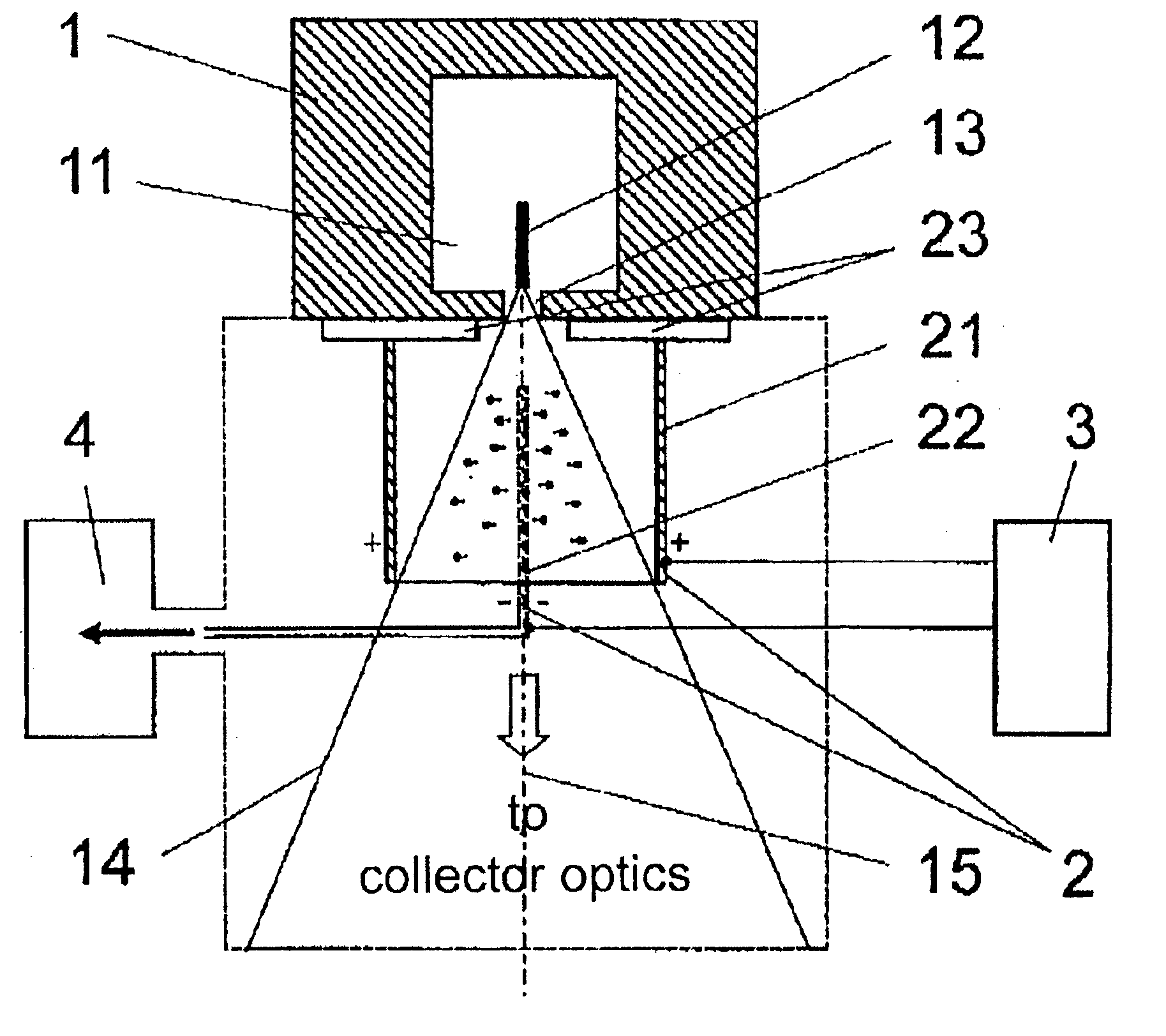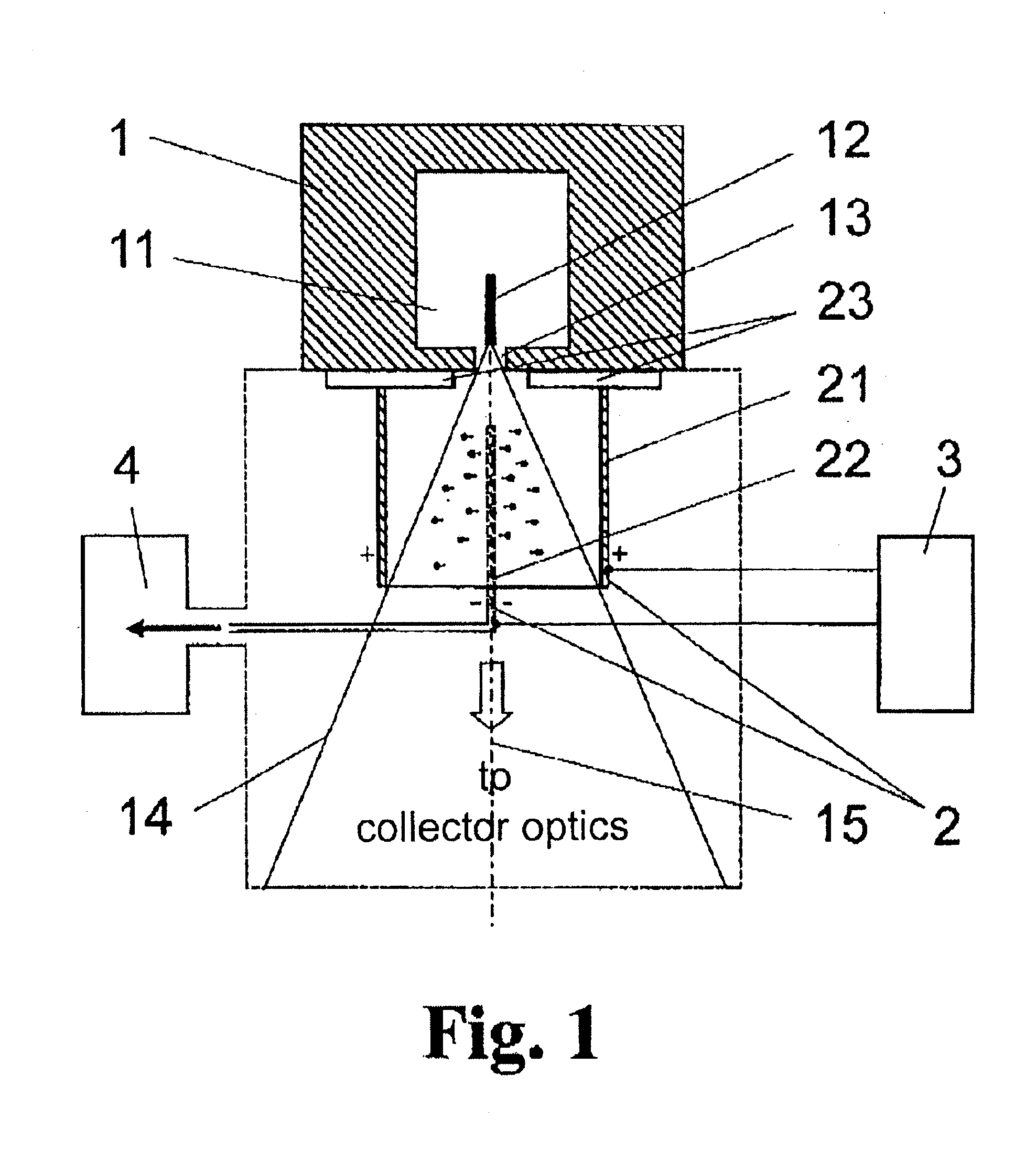Arrangement for the suppression of particle emission in the generation of radiation based on hot plasma
a technology of radiation generation and particle emission, applied in the direction of optical radiation measurement, instruments, therapy, etc., can solve the problems of inflexibility, high cost of latter, and inability to meet the requirements of the application, so as to reduce the transmission or limit the usable solid angle of radiation
- Summary
- Abstract
- Description
- Claims
- Application Information
AI Technical Summary
Benefits of technology
Problems solved by technology
Method used
Image
Examples
Embodiment Construction
[0031]As is shown schematically in a sectional view in FIG. 1, the arrangement according to the invention basically comprises a plasma-coupled radiation source 1, preferably—but without limiting generality—an EUV radiation source with a vacuum chamber 11 for generating a plasma 12 (e.g., z-pinch) and an outlet opening 13 which gives the solid angle of a divergent beam bundle 14 generated by the plasma 12, at least one electrode pair 2 for generating an electric field, and a gas sink in the form of a vacuum unit 4.
[0032]The debris filter arrangement which is designed in this way is installed between the radiation source 1 and first collector optics of the application device (e.g., a lithography station in a semiconductor chip production line). The construction allows the use of radiation sources based on a gas discharge as well as radiation sources with laser-induced plasma.
[0033]The first embodiment form of the arrangement shown in FIG. 1 is substantially cylindrically symmetric. An...
PUM
 Login to View More
Login to View More Abstract
Description
Claims
Application Information
 Login to View More
Login to View More - R&D
- Intellectual Property
- Life Sciences
- Materials
- Tech Scout
- Unparalleled Data Quality
- Higher Quality Content
- 60% Fewer Hallucinations
Browse by: Latest US Patents, China's latest patents, Technical Efficacy Thesaurus, Application Domain, Technology Topic, Popular Technical Reports.
© 2025 PatSnap. All rights reserved.Legal|Privacy policy|Modern Slavery Act Transparency Statement|Sitemap|About US| Contact US: help@patsnap.com



